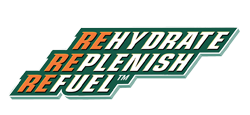
Over the course of the H2O Tour, i2P Education will be posting Student Exercises. These are water related exercises that students and teachers can engage in, and relate back to a fundamental principle or point of interest about water.
If you have suggestions for interesting Water based Student Exercises please send them to us.
Exercise 9:
Take 1.2 ounces of salt and pour it into 1 liter of water. You have now created water with the average salinity of sea water.
See: Module 7
Exercise 8:
Make Ice Cubes that Sink in Water!
Obtain some heavy water - talk to the chemistry teacher - see is it is available in your community.
Freeze the heavy water in an ice cube tray. Note that heavy water freezes at a higher temperature than regular water.
Place the heavy water ice cubes in a glass of water and see what happens! (see: heavy ice)
Take a photo of your sinking ice cubes and send it in to us at i2P and we will post it on the website.
See: Module 13
Exercise 7:
How much does a cloud weigh?
See: cloud weight
Compare the weight of a cloud to the weight of an elephant.
See: elephant clouds
Compare the weight of a cloud to the weight of an airplane.
See: airplane clouds
See: Module 13
Exercise 6:
Imagine if you had no running water in your home, and your family had to walk at least a kilometer to find clean water, and carry it home by hand. How would this affect your day to day life? With the other students in your class estimate the following:
How much water you use at home each day?
How long it would take to carry that water 1 kilometer to your house?
Who would carry the water?
How this would impact the current activities of your family members (consider work, school and leisure activities)?
See: Module 13
Exercise 5:
Each student should count the number of household substances they have that would be potentially dangerous if leached into their drinking water. This includes gasoline, fertilizers, human waste, pesticides, cleaning products, etc.
Where do these substances go if washed down the sink?
Exercise 4:
The great water boil off!
In your classroom take 2 pots of water of equal volume and temperature. Add 2 tablespoons of table salt to one pot. Heat the two pots at the same temperature and determine which one boils first.
Exercise 3:
Assume two people were the same height (5' 10") but one weighed twice as much as the other (300 vs 150 lbs). If they are doing the same amount of exercise and were cooling their bodies by sweating, would they need to produce the same amount of sweat?
If you need help answering this see: Surface to Volume
Exercise 2:
You can demonstrate the greater capacity of water to conduct heat away than air (thermal conductivity), by boiling water in a paper cup. Although the water in the cup boils, the paper will not light on fire. See the elegant experiment: Boil water in a paper cup
Paper will not ignite below about 230 0C. When it reaches 100 0C, the water in the cup will boil and stay at that temperature while it boils away. Water is a relatively good conductor of heat and this, together with convection effects, transfers heat away from the hot spot above the Bunsen flame.
Exercise 1:
How many water molecules are there in an 8 ounce glass of water? See if you can figure this out.
See Module 4
For more help see: Water Molecules.


